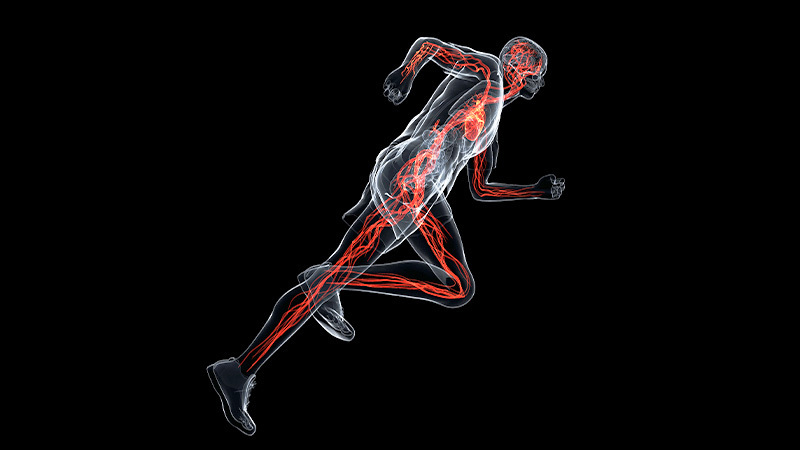Meta-analysis shows that FFR after PCI is lower in LAD than in non-LAD, and that higher FFR after PCI is associated with a lower risk of adverse cardiac events but not with a higher predictive power, Takuya Mizukami, Cardiovascular Center Aalst, OLV Clinic Aalst, presented at the Late Breaking Clinical Trial session at CVIT 2022.
Vessel-specific predictive capacity for adverse cardiac events using fractional flow reserve after percutaneous coronary intervention: A pooled individual-patient analysis in 3336 vessels

In this study, the investigators searched MEDLINE, Embase, and CENTRAL in December 2021 and performed a meta-analysis of patient-level data from 2,760 patients (3,336 measured FFR) included in nine studies in which FFR was measured after PCI and for which individual patient-level data were available. They also evaluated the ability of FFR to predict TVF (cardiac death, target vessel-related MI, and TVR) by coronary artery-specific FFR after PCI, and differences in FFR after PCI between LAD and non-LAD patients.
The mean FFRs for LAD and non-LAD before PCI were comparable at 0.66 (0.63-0.69) and 0.65 (0.61-0.69), respectively (p=0.71). On the other hand, the mean FFR after PCI was 0.86 for LAD, 0.93 for LCX, 0.91 for RCA, and the mean difference between LAD and non-LAD was 0.064 (0.045-0.082), showed a significant difference (p<0.001).
Multivariate analysis identified LAD, pre-PCI FFR values, diabetes, number of stents used, and total stent length as predictors defining FFR after PCI.
Of the nine eligible studies, five had clinical follow-up (median follow-up 2.04 years): the 3V FFR FRIENDS trial, the ARKANSAS registry, the COE-PERSPECTIVE trial, the FAME 2 trial, and the TARGET-FFR trial, which included 2,439 patients and FFR after PCI was measured in 1,415 (58.0%) for LAD, 440 (18.0%) for LCX, and 584 (23.9%) for RCA.
Logistic analysis showed an increased risk of TVF odds ratio of 1.34 ([95%CI 1.02-1.74] p=0.035) for LAD and 1.65 ([95%CI 1.19-2.26] p=0.002) for non-LAD for every 0.10 decrease in FFR after PCI. ROC curve showed that overall, the AUC for TVF was 0.56 (95%CI 0.52-0.60); for LAD, the AUC was 0.54 (95%CI 0.48-0.59) and the optimal cutoff was 0.80; for non-LAD, the AUC was 0.61 (95%CI 0.56-0.67) and the optimal cutoff was 0.90 The results showed that the optimal cutoff value was 0.90. The validity of these cutoff values was also demonstrated by the calculation of cutoff values using maximally selected rank statistics.
When looking at the 5-year risk of TVF for postoperative FFR >0.80 and ≤0.80 in LAD, the risk was significantly higher for ≤0.80 (adjusted HR 0.44 [95%CI 0.30-0.65] p<0.001) and significantly higher for ≤0.90 compared to >0.90 in non-LAD (adjusted HR 0.48 [95%CI 0.32-0.73] p<0.001).
The predictive ability of FFR after PCI for TVF was 0.28 for sensitivity and 0.80 for specificity at a cutoff value of 0.80 for LAD.The sensitivity and specificity for a cutoff value of 0.90 for non-LAD were 0.57 and 0.64, respectively.
Dr. Mizukami summarized “Although a higher post-PCI FFR reduces the probability of adverse events, its predictive value remains modest. There is insufficient evidence to support post-PCI FFR as a surrogate maker of outcomes in clinical trials. Further investigation is necessary to understand if additional PCI in response to post-PCI FFR data can improve clinical outcomes. “
ご注意 当サイト内の全ての記事と動画の転載・転送はご遠慮ください。なお、法律上保護されたコンテンツの無許可の転載、複製、転用等は、当該コンテンツの権利者等から損害賠償請求その他の法的手続を申し立てられ、事案によっては処罰される可能性、また、故意にそれらを受け取った場合も同様の措置を受ける可能性がございます。ご不明な点がございましたら当社までご連絡ください。




